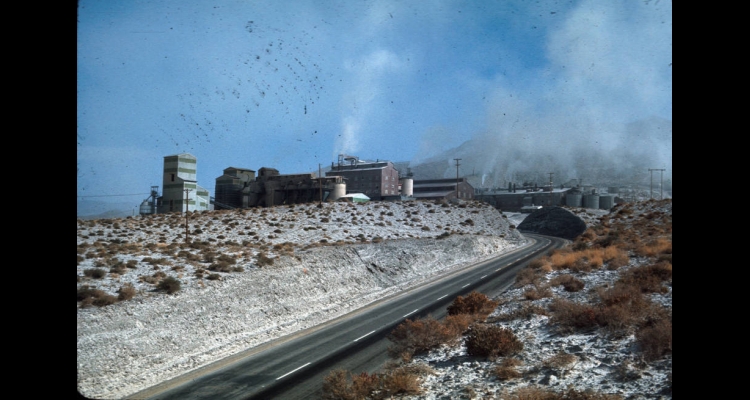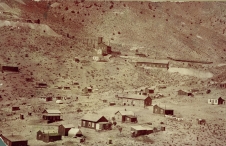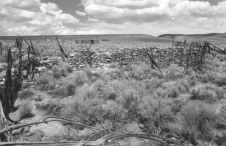Gabbs
As World War II raged in Europe in 1941, the British government found itself short of magnesium alloy. The metal—a third lighter than aluminum—was an important component in effective aircraft and weapons construction. One American company, Basic Refractories, Inc. (BRI), of Cleveland Ohio, felt it was in a position to help. BRI was already exploiting raw components of magnesium in Brucite, a small mining camp in northwestern Nye County, Nevada. In June 1941, British and American magnesium producers formed a new company, Basic Magnesium, Inc. (BMI), which immediately began operations to remove enormous amounts of ore from the Nevada desert. As a result, the town of Gabbs quickly emerged.
To accommodate construction workers, two dormitories were erected along with a tent city, and by the end of 1941, the town supported eighty-two workers, contractors, and engineers. Power was provided by a sixty-four-mile transmission line that ran to Millers, about fifteen miles west-northwest of Tonopah, and a permanent telephone line was established in January 1942. Later that year, the small settlement of North Gabbs was established to house additional workers. In 1943, the town site of South Gabbs was completed to give permanent housing to families that had been living in the tent city.
By June 1942, the primary crushing plant was completed, and production began with workers totaling 325. After ore was crushed, it was transported to another facility that had been constructed by BMI just south of Las Vegas. The site, which would give birth to the town of Henderson, was chosen because of the plentiful water and power provided by Lake Mead and Boulder Dam. The combined operation was an unmitigated success. By 1943, the company had produced 100 million pounds of metal, and was still running at 105 percent of capacity.
But within months, the War Production Board determined that the operation had yielded enough metal for the projected duration of the war effort, and production was reduced to sixty percent of capacity. Cuts were again made in July 1944, and by September mining operations in Gabbs closed.
People left Gabbs quickly after the plant closure, but a revival was on the way. The mining operation was purchased from the government in 1949 by BRI, which sought to manufacture and market magnesium to the private sector. The town's population bounced back. A plant was installed and by 1955, a new high school and gymnasium was established. BRI expanded again in 1959, and by 1960, the town's population had reached 796.
Gabbs remained stable until 1982, when BRI laid off more than half of its 350-person workforce. A brief revival came in 1986, when FMC Corporation opened its Paradise Peak gold mine, but it closed in 1994.
By 2000, the town's population had tumbled to 318—a 52.3 percent decline since 1990. In 2001, Gabbs lost its status as an incorporated community. Six years later, a K-12 school was still in operation, with a combined population of fifty-eight students.
Article Locations
Related Articles
Further Reading
None at this time.



